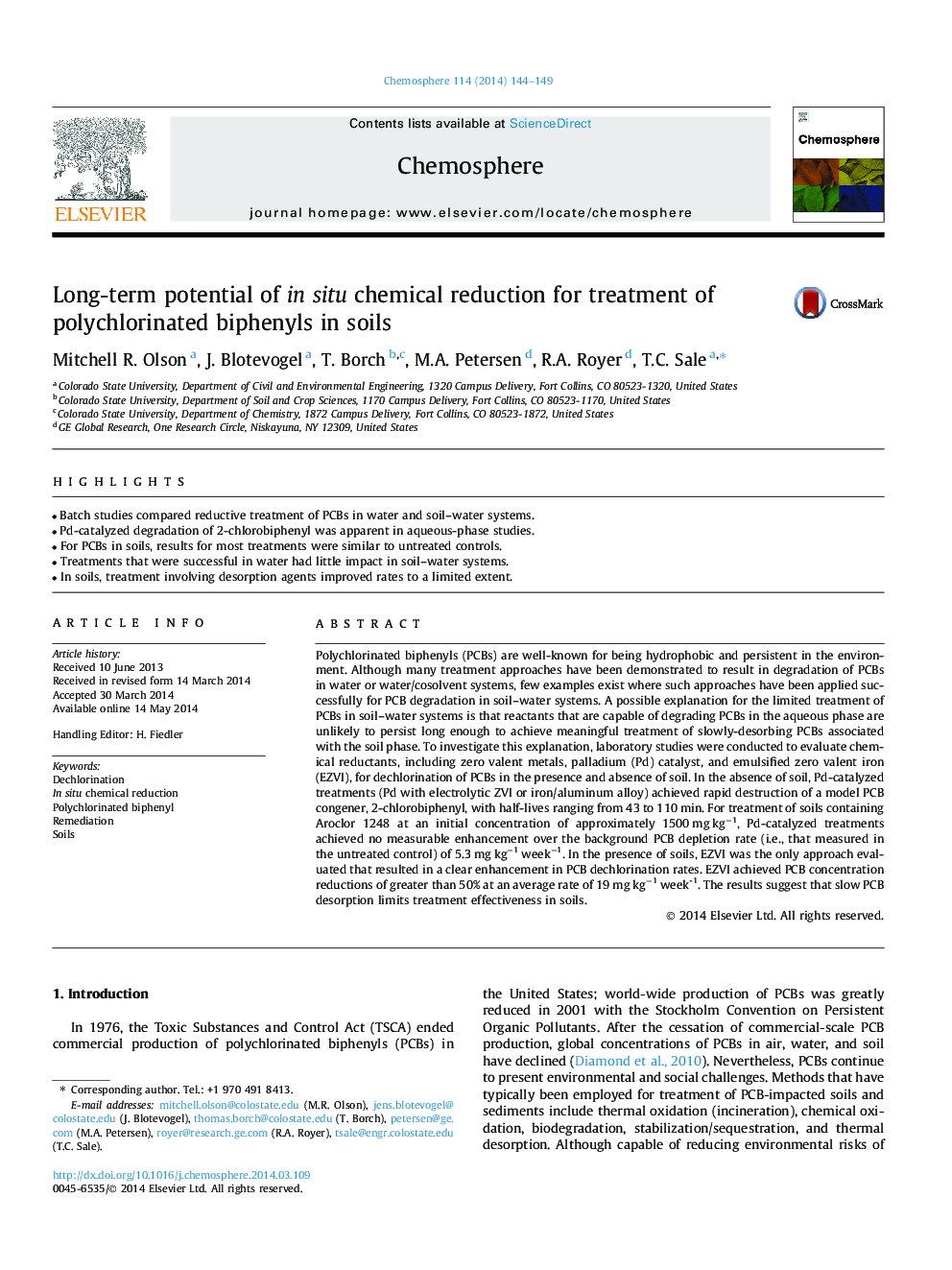| کد مقاله | کد نشریه | سال انتشار | مقاله انگلیسی | نسخه تمام متن |
|---|---|---|---|---|
| 6308933 | 1618857 | 2014 | 6 صفحه PDF | دانلود رایگان |
- Batch studies compared reductive treatment of PCBs in water and soil-water systems.
- Pd-catalyzed degradation of 2-chlorobiphenyl was apparent in aqueous-phase studies.
- For PCBs in soils, results for most treatments were similar to untreated controls.
- Treatments that were successful in water had little impact in soil-water systems.
- In soils, treatment involving desorption agents improved rates to a limited extent.
Polychlorinated biphenyls (PCBs) are well-known for being hydrophobic and persistent in the environment. Although many treatment approaches have been demonstrated to result in degradation of PCBs in water or water/cosolvent systems, few examples exist where such approaches have been applied successfully for PCB degradation in soil-water systems. A possible explanation for the limited treatment of PCBs in soil-water systems is that reactants that are capable of degrading PCBs in the aqueous phase are unlikely to persist long enough to achieve meaningful treatment of slowly-desorbing PCBs associated with the soil phase. To investigate this explanation, laboratory studies were conducted to evaluate chemical reductants, including zero valent metals, palladium (Pd) catalyst, and emulsified zero valent iron (EZVI), for dechlorination of PCBs in the presence and absence of soil. In the absence of soil, Pd-catalyzed treatments (Pd with electrolytic ZVI or iron/aluminum alloy) achieved rapid destruction of a model PCB congener, 2-chlorobiphenyl, with half-lives ranging from 43 to 110 min. For treatment of soils containing Aroclor 1248 at an initial concentration of approximately 1500 mg kgâ1, Pd-catalyzed treatments achieved no measurable enhancement over the background PCB depletion rate (i.e., that measured in the untreated control) of 5.3 mg kgâ1 weekâ1. In the presence of soils, EZVI was the only approach evaluated that resulted in a clear enhancement in PCB dechlorination rates. EZVI achieved PCB concentration reductions of greater than 50% at an average rate of 19 mg kgâ1 week-1. The results suggest that slow PCB desorption limits treatment effectiveness in soils.
Journal: Chemosphere - Volume 114, November 2014, Pages 144-149
